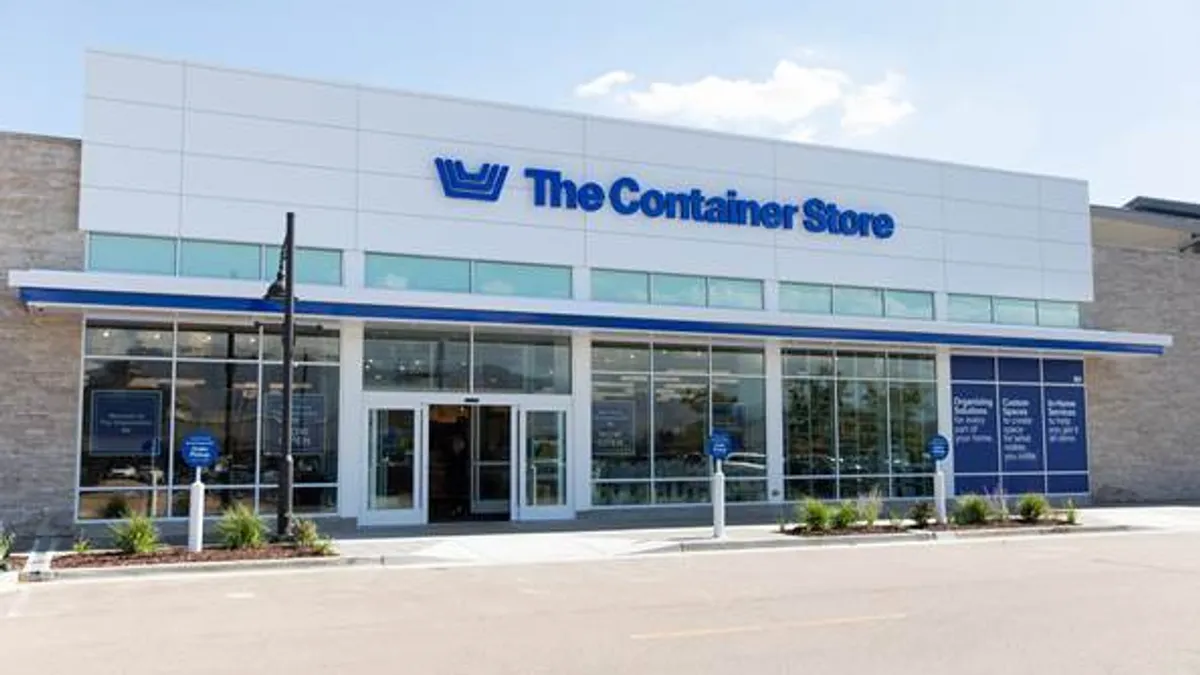Around this time last year, retail inventories reached their peak. For well over a year, players in the industry have been working to bring inventory levels back in line with demand — often sacrificing profit in the short term.
In the second quarter of 2023, many retailers and brands saw their efforts bear fruit. Inventories for many — though not all — were down. Margins were up. And the combination of leaner stocks and faster supply chains allowed supply chain managers to chase trending categories through their purchasing practices.
All of that, retailers hope, means the most profitable sales possible in a lackluster demand environment. As retailers head deeper into the third quarter, here is a look at how a selection of retailers and brands measured up against each other on key operating metrics in Q2.
Walmart
What executives said: John Rainey, CFO: “The team continued to do a good job managing inventory, and we ended the quarter down 5%, including an 8% decline in Walmart U.S. We feel good about the progress we've made on in-stock levels as [the] supply chain is normalized and the composition of our inventory mix is improved. We're maintaining discipline in how we're buying general merchandise during this uncertain macro environment to mitigate future risk if demand softens.”
Target
What executives said: John Mulligan, COO: “This quarter's better-than-expected profitability was a testament to [employees’] agility and resilience as they successfully managed through multiple challenges. And while the team deserves credit for this performance, they got an assist from this year's leaner inventory position which offered more room to maneuver than a year ago when the team was dealing with excess inventory. This year, with uncluttered facilities, a renewed focus on retail fundamentals and our continued work to enhance efficiency, the team delivered an impressive increase in profitability in the face of a challenging top line.”
Kohl's
What executives said: Tom Kingsbury, CEO: “As we implement new planning and allocation processes, we're becoming more responsive to the customer's demand, operating with additional open-to-buy to chase trends and minimize risk, maintaining better in stock levels in core basics, and improving inventory flow from our distribution centers to the selling floor. Looking to the fall season, we feel good about our current inventory levels and our ability to continue to manage inventory with discipline.”
Macy's
What executives said: Jeff Gennette, CEO: “Ultimately, we ended the second quarter with inventories down 10% to last year and down 18% to 2019. We were disciplined with our approach to inventory commitments and flexed the cadence and depth of promotions and markdowns, utilizing our data-driven tools to reduce the length of seasonal clearance activity by several weeks. Promotional sell-throughs were better than expected and clearance markdowns were not as deep. Thanks to our cross-functional teams for being nimble, flexible and embracing new ways of working.
“Entering the third quarter, store floors and online are less cluttered and easier to navigate. Content is fresh and seasonally appropriate with open-to-buy and the ability to chase into areas of strength, all of which improves the omnichannel shopping experience.”
Dollar General
What executives said: Jeff Owen, CEO: “We are strategically accelerating the rightsizing of our inventory position by expanding promotional markdowns, primarily in our non-consumable products. While we expect this to result in an operating profit headwind of approximately $95 million in the back half of the year, we believe it will drive traffic and also more quickly reduce excess inventory. We believe this rightsizing supports our operating priority of enhancing our position as a low-cost operator and that it will accelerate improvement in a number of areas, including store and supply chain efficiencies as well as shrink, damages and cash flow.”
Dollar Tree
What executives said: Jeff Davis, CFO: “While inventory was below last year's level, it is elevated due to early receipt of imports. With a rapid recovery across our supply chain, seasonal imports from Asia arrived well ahead of our scheduled third quarter receipts. Moving forward, we will continue to manage our inventory and related trade accounts payable to improve free cash flow generation.”
Under Armour
What executives said: David Bergman, CFO: “I just would kind of remind us that our inventory is in a very healthy position. We don't have a lot of older products that's making up our inventory and we are normalizing against leaner days last year. So I think we're balancing the promotions and the need to move some of our inventory very well and also kind of keeping that third-party off-price liquidation channel in that 3% to 4% range of revenue, which we feel is a reasonable level.”
Nike
What executives said: Matt Friend, CFO: “Looking at inventory, we continue to feel very good about our position. Nike inventory dollars are down 10% versus the prior year. Our total inventory units across the marketplace, including Nike and our wholesale partners, are down double digits versus the prior year.
“Partner-owned inventory units are in line with the previous year, with levels planned to remain lean through our second quarter, a meaningful accomplishment after higher levels of wholesale sell-in during fiscal '23. On the whole, we are very comfortable with the level of inventory in the marketplace in relation to the retail sales that we're seeing as we begin increasing levels of wholesale sell-in in our second half.”
Lululemon Athletica
What executives said: Meghan Frank, CFO: “I would say we’ve made some significant progress. We still have some degree of elevated airfreight in our inventory balance on a cost basis. So, I would say not completely optimized, and turns are a little bit slower than history, and our goal over the longer term would [be] to get those inventory turns back to normalized historical rates. So still some opportunity, but I think the team has done a nice job in navigating what was a really dynamic supply chain and positioning inventory so that we were able to capitalize on the demand upside that we saw and experienced.”
Abercrombie & Fitch Co.
What executives said: Scott Lipesky, CFO and COO: “The supply chain is in a good place with freight costs, shipping times and performance significantly better than last year. With a functioning supply chain, we can once again run the business the way we would like, leveraging chase to read and react and drive inventory receipts. Our inventory for the quarter was down 30% to last year, and both brands and all regions are leveraging our chase capabilities.
“We continue to expect to finish the third quarter with inventories lower than last year. At year-end, we expect to be flat to down to last year.”
American Eagle Outfitters
What executives said: Mike Mathias, CFO: “Compared to last year, gross profit dollars increased $83 million or 22% to $453 million with a gross margin rate up 680 basis points to 37.7%. The majority of the improvement was driven by better merchandise margins. Inventory discipline drove lower markdowns as we maintain our focus on healthy promotions. Additionally, we lapped $25 million of freight headwinds and $30 million of incremental markdowns related to end-of-season sell-offs last year.”
Gap Inc.
What executives said: Katrina O’Connell, CFO: “Ending inventories declined 29% in second quarter versus last year. This includes a 9 percentage point decline related to in-transit as we lap the prior year supply chain challenges and 6 points of decline related to releasing the majority of our pack and hold inventory balance. The remaining 14-point decline was driven by more efficient inventory management.
“As you know, we made significant progress on reducing inventories as we exited fiscal 2022. We remain focused in fiscal 2023 on moderating buys and utilizing our responsive levers. As a result, we are planning for year-over-year inventory to be down generally in line with year-to-date trends at the end of third quarter.”






















